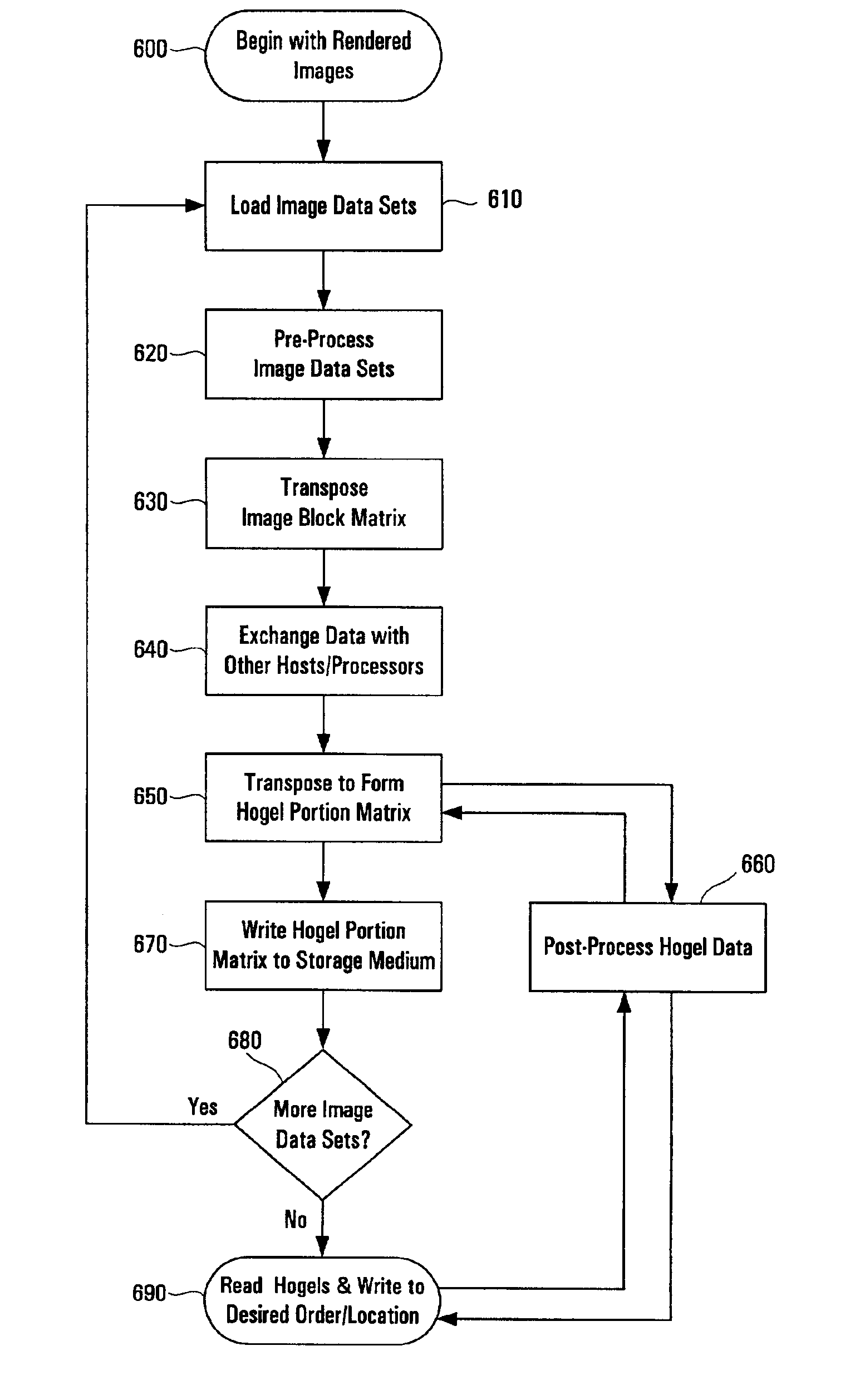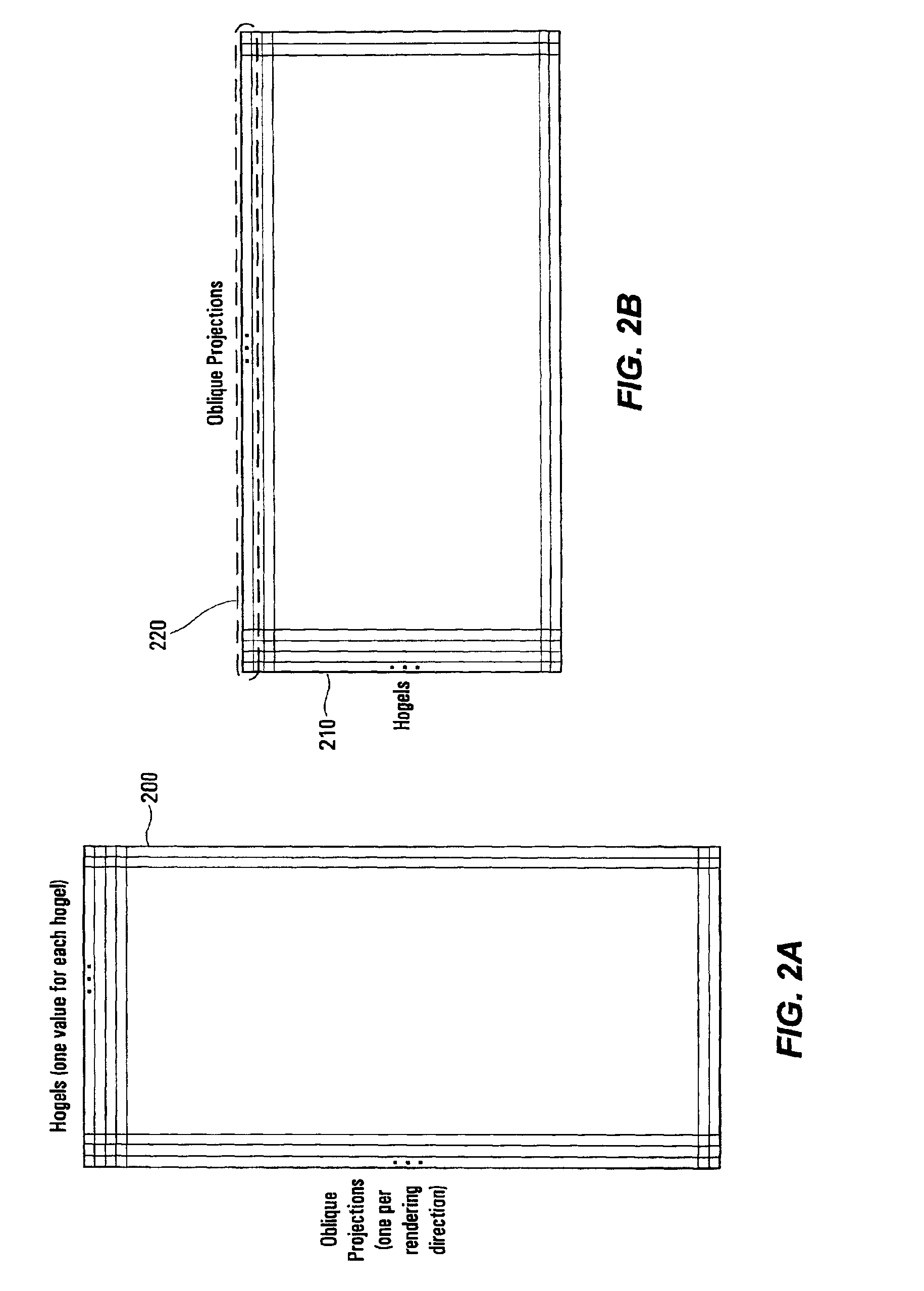Efficient block transform including pre-processing and post processing for autostereoscopic displays
a block transform and autostereoscopic display technology, applied in the field of processing image data, can solve the problems of inability to achieve the effect of holographic stereogram viewability, inability to apply ray tracing, and large physical systems
- Summary
- Abstract
- Description
- Claims
- Application Information
AI Technical Summary
Benefits of technology
Problems solved by technology
Method used
Image
Examples
Embodiment Construction
The following sets forth a detailed description of at least the best contemplated mode for carrying out the one or more devices and / or processes described herein. The description is intended to be illustrative and should not be taken to be limiting.
FIG. 2A illustrates one approach to the reparameterization of image data in order to produce hogel images that can then be used in the production of holographic stereograms. Image matrix 200 is a matrix including all of the image data rendered for a particular holographic stereogram tile. Each row in image matrix 200 has data values corresponding to the number of hogels in the tile, for example 90,000 values for a 300 by 300 hogel tile. Each of these values is typically a 24 bit value representing the color of the corresponding pixel as rendered. The number of rows is equal to the number of parallel oblique projections that were rendered, for example 1,269,760 rows assuming that each pixel of a 1240 by 1024 LCD defines a unique direction ...
PUM
 Login to View More
Login to View More Abstract
Description
Claims
Application Information
 Login to View More
Login to View More - R&D
- Intellectual Property
- Life Sciences
- Materials
- Tech Scout
- Unparalleled Data Quality
- Higher Quality Content
- 60% Fewer Hallucinations
Browse by: Latest US Patents, China's latest patents, Technical Efficacy Thesaurus, Application Domain, Technology Topic, Popular Technical Reports.
© 2025 PatSnap. All rights reserved.Legal|Privacy policy|Modern Slavery Act Transparency Statement|Sitemap|About US| Contact US: help@patsnap.com



